Symbolist portrait, Circa 1900
Oil on canvas
40.5 x 32.5 cm
49 x 41 cm with its frame
Signed 'Coront' lower right
Born in Vanosc, in the hamlet of Cluzeau, where his family had been established for centuries, Joseph Coront Ducluzeau joined the painting workshop of Jean-Baptiste Danguin at the School of Fine Arts in Lyon in 1879. After winning the major Lyon School Competition in 1882, he went to Paris to study with Alexandre Cabanel at the School of Fine Arts. A regular visitor to the Cluny Museum and the Louvre, the young artist has a predilection for medieval tapestries and 18th century masters, such as Largillierre, Boucher, Nattier and Watteau. Although he established his workshop in the capital, he remained very attached to his region of origin and regularly returned to stay in Vanosc, carrying out the interior decoration of the Château de la Rivoire. In addition to the Lyonnais François Guiguet and Louis Eymonnet, Coront became friends in Paris with Alexandre Séon and was introduced by his friend the critic Alphonse Germain to the symbolist poet Jean Moréas, whose verses he illustrated in the magazine L'hémicycle in February 1901 At the beginning of the century, the painter showcased his talents as a decorator, landscaper and portraitist on the walls of the salon of the Société Nationale des Beaux-arts, where he was noticed and collected by the art historians Charles Saunier and Emile Male. Both in terms of its subject and at the technical level, our portrait clearly illustrates what made Joseph Coront successful. The latter represents an elegant young woman in three-quarter view, sitting at the edge of a balustraded window whose curtain opens onto the sea, revealing the architecture of a lighthouse in the distance. Turning her gaze away from the horizon, the model seems pensive, as if lost in thought. If the decor is treated in a fairly synthetic manner, Coront strives to translate the effects of the light of a late afternoon on the face of the young woman, in a finely modeled chiaroscuro. The subtle brushwork barely hides the preparatory charcoal line, still visible, which seems to partition the figure. In the background, the landscaper regains his rights by favoring a strangely more divisionist style. To transcribe the light ripples of the water, as well as the reflections of a noticeably pink sky, dotted with small touches of orange, the artist fragments the blue-green of the sea by the methodical application of bright orange lines. So many plastic elements which give this portrait an almost decorative dimension. He also becomes a symbolist through the enigmatic expression of the model, who appears lost in the twists and turns of his inner life, confirming the praise expressed by Alphonse Germain in 1897: “Very observant of individual character, Mr. Coront excels at writing a physiognomy and, among the already numerous portraits bearing his signature, one would not find one, perhaps, which is not a soul[1]. »
[1] Germain, Alphonse, “Joseph Coront”, L’Ermitage, July 1, 1897, p. 151.








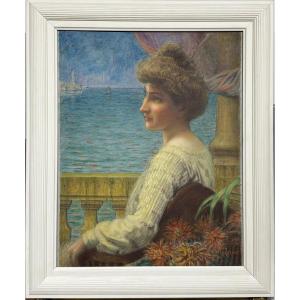






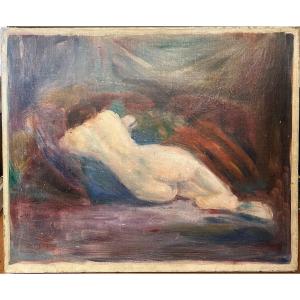
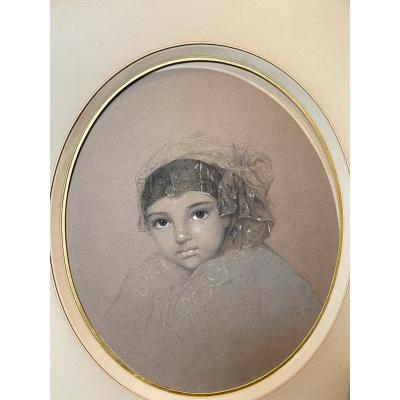

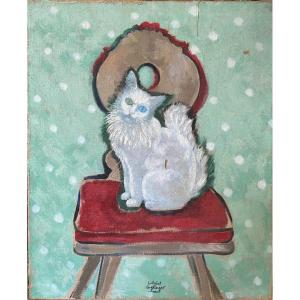
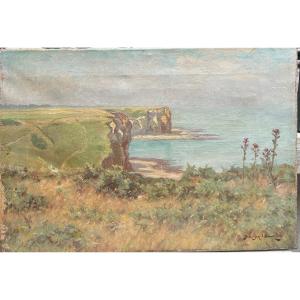






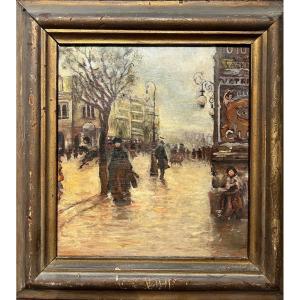
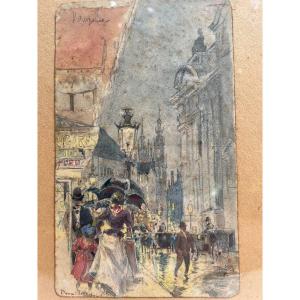

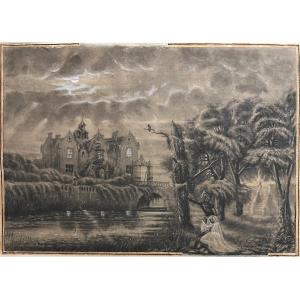

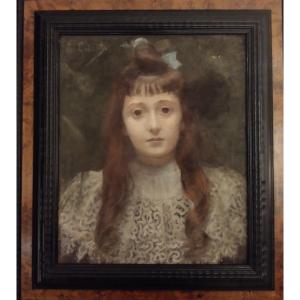

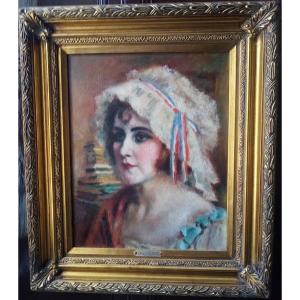




 Le Magazine de PROANTIC
Le Magazine de PROANTIC TRÉSORS Magazine
TRÉSORS Magazine Rivista Artiquariato
Rivista Artiquariato